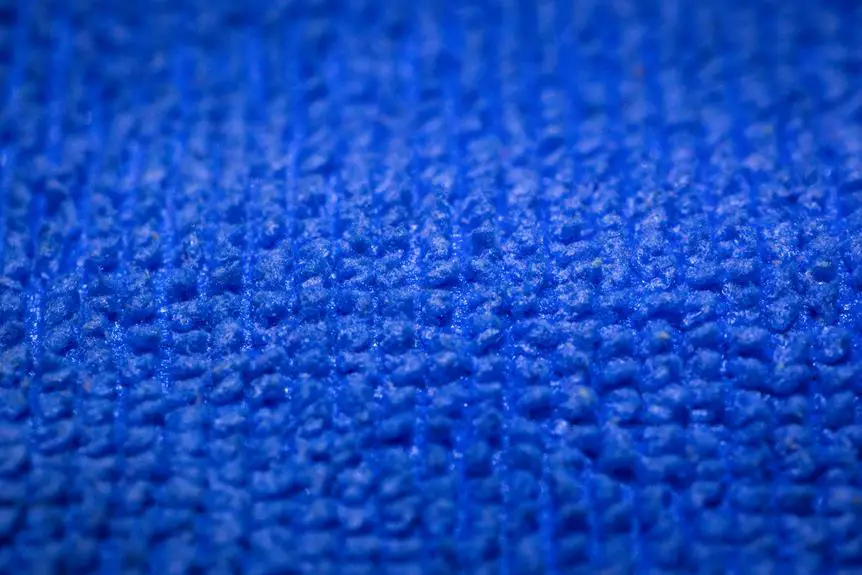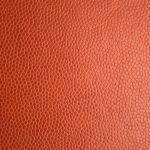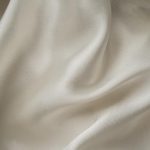When it comes to choosing materials for your home, you might wonder if microfiber is truly hypoallergenic. While it's known for effectively trapping allergens like dust and pet dander, not all microfiber products are created equal. Some can harbor chemicals or dyes that may provoke allergic reactions in sensitive individuals. So, how can you ensure you're selecting the right microfiber items that minimize potential irritants? Understanding what to look for and how to maintain these products can make all the difference in your comfort and health.
Table of Contents
Key Takeaways
- Microfiber can reduce allergens by trapping dust and pet dander more effectively than traditional cleaning materials.
- Some microfiber products may contain chemicals or dyes that could trigger allergic reactions in sensitive individuals.
- Regular cleaning and maintenance of microfiber can help minimize dust mites and other allergens in the home.
- Choose microfiber brands that advertise being free from harmful chemicals for better allergy management.
Understanding Microfiber Composition
Microfiber's unique composition, made from synthetic fibers like polyester and polyamide, makes it both lightweight and highly effective at trapping dust and allergens. These fibers are incredibly fine, often measuring less than one denier, which is much thinner than a human hair. This fine structure allows microfiber to create a larger surface area that can capture microscopic particles, making it an excellent choice for cleaning and dusting.
When you use microfiber products, you're essentially harnessing the power of these tiny fibers to lift and hold dirt, dust, and other contaminants. The density and structure of microfiber enhance its ability to absorb moisture, which means it can also pick up and retain liquids without leaving streaks.
You'll find that microfiber is often woven into various forms, including cloths, mops, and towels. Each type is designed for specific tasks, whether it's cleaning surfaces or drying dishes. Plus, it's durable and can withstand numerous washes without losing its effectiveness.
Understanding this composition helps you appreciate why microfiber is a popular choice for both home care and professional cleaning.
Benefits for Allergy Sufferers
Using microfiber products can significantly reduce allergens in your home, making them a smart choice for allergy sufferers. These tightly woven fibers are designed to trap dust, pet dander, and other allergens, preventing them from becoming airborne. When you use microfiber cloths or mops, you'll notice that they pick up more particles than traditional materials, helping you maintain a cleaner environment.
Another advantage is that microfiber is less likely to leave behind lint or residue, which can irritate sensitive airways. By switching to microfiber bedding and upholstery, you can also reduce dust mite populations, as these products are easier to clean and less hospitable to pests.
Microfiber's moisture-wicking properties can further help in reducing mold and mildew, common triggers for allergies. Since these materials are often machine washable, you can easily keep them fresh and allergen-free, ensuring a healthier living space.
Maintenance and Cleaning Practices
To keep your microfiber products in top shape and maximize their hypoallergenic benefits, regular maintenance is essential. Start by vacuuming or shaking out your microfiber items frequently to remove dust, allergens, and debris. This simple step helps maintain their effectiveness and prolongs their lifespan.
When it comes to washing, use a gentle detergent and avoid fabric softeners, as these can leave residues that diminish the fabric's hypoallergenic properties. Wash microfiber in warm water, and if possible, air dry or tumble dry on low heat to prevent damage.
For cleaning surfaces, opt for a damp microfiber cloth. This method attracts and traps dust without spreading it around, making it perfect for allergy sufferers. Avoid using chemical cleaners that could leave irritants behind; instead, consider natural alternatives like vinegar or baking soda.
Lastly, inspect your microfiber items regularly for wear and tear. If they start to lose their effectiveness, it might be time to replace them. By following these maintenance practices, you can enjoy the benefits of microfiber while keeping your environment clean and comfortable.
Potential Irritants in Microfiber
Identifying potential irritants in microfiber is crucial for those with sensitivities, as some products may contain chemicals or dyes that could trigger allergic reactions. Microfiber fabrics often undergo treatments during manufacturing, including anti-static and stain-resistant coatings. These treatments can include synthetic chemicals that mightn't be hypoallergenic.
You should also pay attention to the dyeing process. Some dyes used to color microfiber may have allergens or irritants. If you have a known sensitivity to specific chemicals or dyes, always check product labels or manufacturer information before purchasing.
Additionally, while microfiber is praised for its cleaning capabilities, it can sometimes trap allergens like dust mites, pet dander, and pollen. If you're sensitive to these allergens, regular maintenance and cleaning of microfiber products are essential to minimize exposure.
It's worth noting that not all microfiber products are created equal. Look for brands that specifically market their items as free of harmful chemicals or dyes. By being proactive and informed, you can choose microfiber products that are less likely to irritate your allergies or sensitivities.
Alternative Fabrics to Consider
If microfiber doesn't meet your needs due to potential irritants, there are several alternative fabrics worth considering for allergy-friendly options.
Organic cotton is a fantastic choice; it's soft, breathable, and typically free from harmful chemicals. This natural fabric allows for good airflow, which helps reduce moisture buildup that can attract allergens.
Another great option is bamboo fabric. It's naturally hypoallergenic, moisture-wicking, and resistant to mold and mildew. Plus, bamboo's silky texture provides a comfortable feel against your skin.
Linen is also a strong contender. This durable, breathable fabric is made from flax plants and is less likely to irritate sensitive skin, especially when pre-washed. Plus, it becomes softer with each wash!
For those seeking something synthetic, consider Tencel. Made from sustainably sourced wood pulp, it's hypoallergenic, breathable, and moisture-wicking. Tencel's smooth surface reduces friction, making it ideal for sensitive individuals.
Frequently Asked Questions
Can Microfiber Cause Allergic Reactions in Sensitive Individuals?
Microfiber can cause allergic reactions in sensitive individuals due to its ability to trap dust, pollen, and other allergens. If you're prone to allergies, monitor your symptoms when using microfiber products to stay safe.
How Does Microfiber Compare to Cotton in Allergy Prevention?
Microfiber tends to trap allergens better than cotton, reducing exposure for allergy sufferers. While both materials are generally safe, microfiber's tighter weave can help you breathe easier by minimizing dust and pollen accumulation more effectively.
Are There Specific Brands of Microfiber That Are More Hypoallergenic?
You'll find several brands of microfiber marketed as hypoallergenic, but it's essential to read reviews and check product specifications. High-quality microfiber with tightly woven fibers typically offers better protection against allergens than lower-quality options.
Can Microfiber Accumulate Allergens Over Time?
Yes, microfiber can accumulate allergens over time. If you don't clean it regularly, dust, pet dander, and other particles build up. To keep your space healthy, wash your microfiber items frequently.
Is Microfiber Safe for Infants and Children With Allergies?
When considering microfiber for infants and children with allergies, you should choose high-quality, tightly woven options. Regular cleaning helps minimize allergens, ensuring a safer environment for your little ones while they play and rest.
- Recycling Nonwoven Fabrics: Is It Possible? - July 11, 2025
- Recycling Nonwoven Fabrics: Is It Possible? - July 11, 2025
- Recycling Nonwoven Fabrics: Is It Possible? - July 11, 2025







